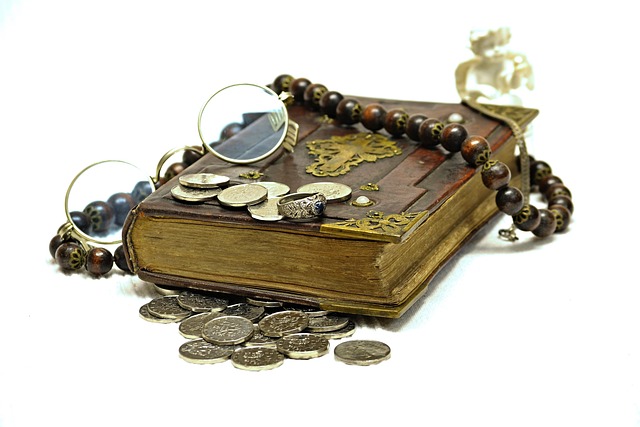Capturing the unique curatorial voice is a key challenge in translating UK art catalogs and exhibition brochures, requiring more than language conversion. Professional translators must master art history, cultural nuances, and specialized terminology to bridge languages while staying true to the original vision. This ensures these vital documents effectively communicate complex ideas and subtle nuances to an international audience, fostering global appreciation for the UK art scene. Specialized translation services with art-savvy translators, detailed metadata, feedback mechanisms, and native speaker proofreading are essential for top-tier UK Art Catalogs and Exhibition Brochures Translation Services.
In the dynamic realm of contemporary art, the curator’s voice is a vital component that enriches and contextualizes artistic expressions. When it comes to reaching global audiences, accurate translation becomes imperative for UK art catalogs and exhibition brochures. This article delves into the significance of capturing the curator’s unique perspective during the translation process, navigating challenges specific to art materials, and offering best practices to ensure cultural sensitivity. By exploring these aspects, we aim to guide institutions and enthusiasts in selecting suitable translation services for their artistic resources.
- Understanding the Importance of Capturing Curator's Voice
- UK Art Translation: A Market Overview
- Challenges in Translating Art Catalogs and Brochures
- Best Practices for Accurate Curator Voice Translation
- The Role of Cultural Sensitivity in Art Translation
- Choosing the Right Translation Service for Your Art Materials
Understanding the Importance of Capturing Curator's Voice
Capturing the curator’s voice is a critical aspect of any art translation project, especially for UK-based Art Catalogs and Exhibition Brochures. Curators play a pivotal role in shaping cultural narratives and their unique perspective on artworks, artists, and historical contexts is invaluable. When translating these important documents, it’s not just about converting words from one language to another; it’s about preserving the curator’s intent, tone, and style.
In the realm of UK Art Catalogs and Exhibition Brochures Translation Services, understanding the curator’s voice allows translators to convey complex ideas, capture subtle nuances, and ensure that the final translated text resonates with readers. It involves a deep appreciation for art history, cultural subtleties, and the specific language used in the field, enabling translators to bridge the gap between languages while staying true to the original curatorial vision.
UK Art Translation: A Market Overview

The UK art scene is a vibrant and diverse landscape, with numerous galleries, museums, and exhibitions drawing visitors from around the world. This cultural richness has led to a thriving market for UK art translation services, particularly in the areas of catalogs and exhibition brochures. These publications serve as essential tools for sharing artistic visions, historical contexts, and critical analyses with an international audience.
The demand for professional translation services in this niche is growing, driven by the increasing globalization of the arts. UK-based translators specializing in art must possess not only linguistic proficiency but also a deep understanding of artistic terminology, cultural nuances, and the specific requirements of catalog and brochure design. They play a crucial role in ensuring that the curator’s voice, along with all its subtleties and nuances, is accurately captured and conveyed to readers worldwide.
Challenges in Translating Art Catalogs and Brochures
Translating UK art catalogs and exhibition brochures presents unique challenges due to their intricate nature. These publications often contain specialized terminology, artistic descriptions, and historical references that demand a deep understanding of both the subject matter and the target language. The task becomes even more complex when aiming for cultural equivalence, ensuring that the translated text resonates with a new audience while maintaining the essence of the original curator’s voice.
Moreover, art catalog and brochure translations require careful consideration of layout and design. Text must be adapted not only for linguistic fluency but also to fit within the existing format, preserving the visual appeal and overall user experience. This necessitates close collaboration between translators, designers, and publishers to achieve a seamless final product that meets the high standards expected in the UK art scene.
Best Practices for Accurate Curator Voice Translation

When translating UK art catalogs and exhibition brochures, capturing the curator’s voice requires a nuanced approach to preserve the original intent and style. Here are some best practices to ensure accuracy:
First, employ professional translators with expertise in art and cultural contexts. These specialists understand the subtle nuances of language and can adapt the translation to reflect the curator’s tone and perspective. Additionally, providing comprehensive metadata, including exhibition themes, target audience, and any specific terminology, allows for a more precise translation. Incorporating feedback loops where curators can review translations ensures that the final output aligns with their vision. Using native speakers for proofreading further enhances the quality, guaranteeing a natural flow in the translated text.
The Role of Cultural Sensitivity in Art Translation

In the realm of art, translation goes beyond mere word-for-word substitution—it involves a delicate dance between cultures. When it comes to UK Art Catalogs and Exhibition Brochures Translation Services, cultural sensitivity is paramount. Art, after all, is not just an object or concept; it’s deeply rooted in the socio-historical context of its creator and their audience. A skilled translator must grasp this context to convey the artist’s intent accurately.
This sensitivity requires a keen understanding of idiomatic expressions, metaphors, and cultural references unique to each language and community. For instance, an exhibition brochure aiming for an international audience must capture the essence of a local artistic tradition without resorting to literal translations that might lose their impact or even offend. It’s about navigating the labyrinthine tapestry of cultural nuances to ensure the message—and the art—resonate authentically across languages and borders.
Choosing the Right Translation Service for Your Art Materials

When it comes to translating art materials, such as UK art catalogs and exhibition brochures, selecting the right service is paramount. Look for providers with a deep understanding of both the artistic and linguistic nuances involved. Expert translators who specialize in this field can capture the essence and intent behind each piece, ensuring accuracy and preserving the original voice.
Reputable translation services should offer native speakers with a background in art or related fields. This expertise ensures that technical terms are handled correctly and cultural references are appropriately translated. Additionally, they must be adept at maintaining the flow and structure of your content while adhering to any specific formatting or design requirements.
Capturing a curator’s unique voice is essential for engaging audiences in the art world. As demonstrated, translating UK art catalogs and exhibition brochures presents specific challenges, from cultural nuances to maintaining tone and style. By adopting best practices, such as cultural sensitivity and choosing the right translation service, curators can ensure their message resonates with global audiences. When it comes to UK art catalog and brochure translation services, understanding these key considerations is vital for successful communication in a diverse artistic landscape.



